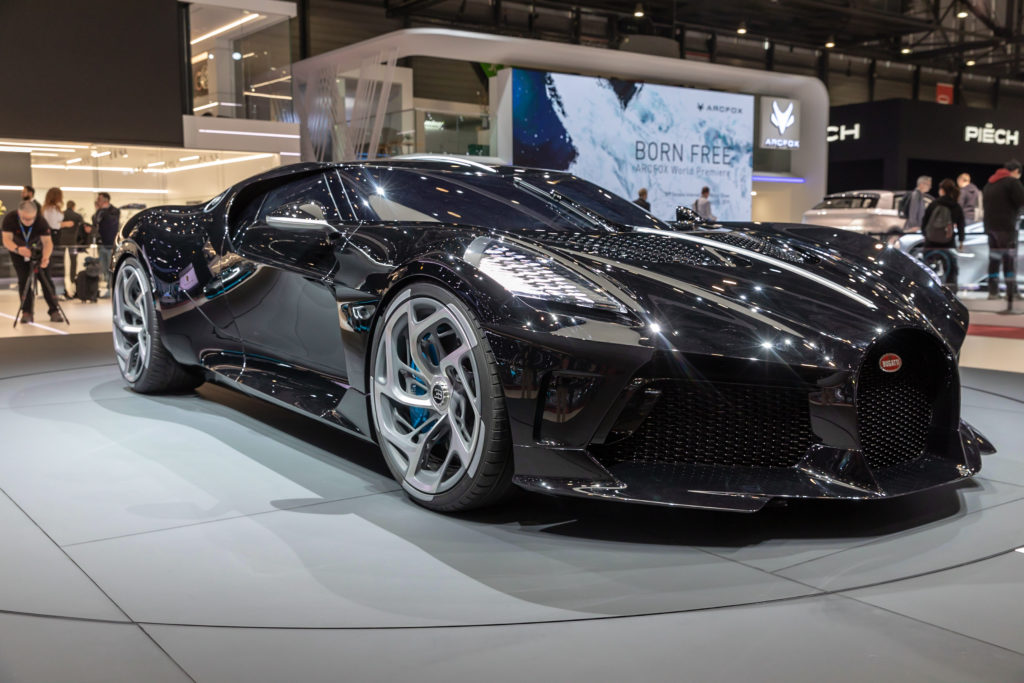
Remember when certain cars made you feel like the coolest person on the road? Those days are long gone for many vehicles that once ruled the streets. What seemed awesome back then now makes people cringe when they see it rolling by. It’s a wild ride, isn’t it? One minute, a car is the absolute talk of the town, turning heads and sparking dreams. The next, it’s… well, let’s just say it’s parked firmly in the ‘What were they thinking?’ category.
From flashy sports cars to trendy SUVs, these rides have a way of losing their magic, transforming from symbols of innovation and desire into something a little more, shall we say, ‘questionable taste.’ We’ve all seen them, the vehicles that went from ‘Wow!’ to a resounding ‘Yikes!’ in the blink of an eye. It’s not just about performance or looks; sometimes, it’s about how they aged, how trends shifted, or how they simply couldn’t live up to the hype.
We’re diving deep into the automotive archives to unearth some of the most dramatic fall-from-grace stories in car history. Get ready to reminisce, maybe even cringe a little, as we highlight 12 cars that, despite their initial fanfare, ended up becoming symbols of questionable design choices, fleeting trends, and sometimes, just plain bad ideas. Let’s buckle up and take a trip down memory lane to revisit these once-hyped rides that just couldn’t keep their cool.
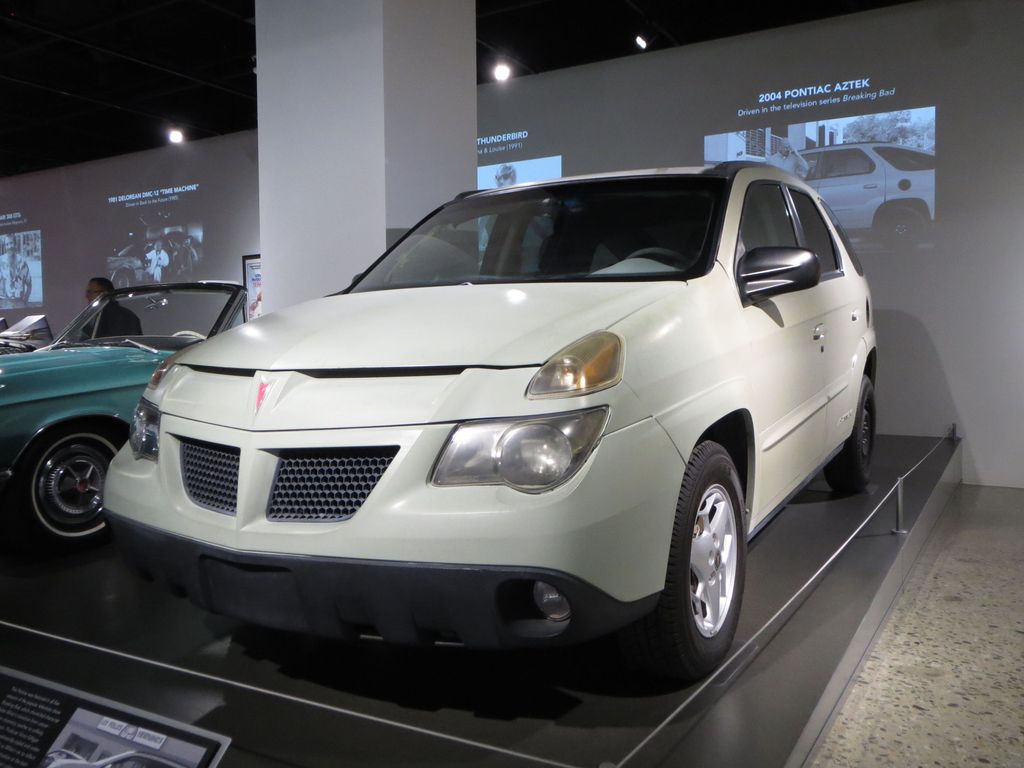
1. **Pontiac Aztek**
Ah, the Pontiac Aztek. Where do we even begin with this automotive enigma? When it first rolled off the production line, it looked like someone took a regular SUV and hit it with a hammer from every conceivable angle. It wasn’t just a car; it was a conversation starter, though perhaps not in the way General Motors had intended. This vehicle quickly became a punchline, a rolling meme before memes were even really a thing, all thanks to its utterly confused and undeniably awkward identity.
General Motors truly believed they were pushing the boundaries of modern design with the Aztek, envisioning a future where weird plastic panels and strange angles were the epitome of cool. Unfortunately for them, the public had a very different idea. What they created ended up looking less like a sleek, futuristic concept and more like a spaceship that had been designed by someone who had never actually seen a spaceship. It was a bold experiment, to be sure, but one that missed the mark by a cosmic distance.
Despite its polarizing looks, the Aztek wasn’t entirely devoid of clever ideas. It boasted some genuinely cool features, like a built-in tent and an array of camping gear, making it a surprisingly practical choice for the adventurous type. However, none of these ingenious additions could overcome the sheer visual hurdle. Nobody cared about the utility when the aesthetics were just too much to handle for most people. The car’s appearance became an instant, insurmountable barrier.
Ultimately, the Pontiac Aztek cemented its place in automotive history as a symbol of audacious design that went spectacularly wrong. For a solid decade after its debut in 2000, its chunky gray plastic cladding, lumpy proportions, and bizarre rear end were the subject of countless jokes. It perfectly illustrates how sometimes, even with good intentions and innovative features, if the visual appeal isn’t there, a car can plummet from anticipated “wow” to undeniable “yikes” in record time.
Car Model Information: 2005 Pontiac Aztek Base
Name: Pontiac Aztek
Manufacturer: General Motors
Production: July 2000 – December 2004
Assembly: Ramos Arizpe
Designer: Tom Peters (chief designer: 1997)
Class: Mid-size crossover SUV
BodyStyle: SUV
Platform: GM U platform
Related: Buick Rendezvous
Layout: Front-engine, front-wheel-drive layout
Engine: General Motors 60° V6 engine#LA1,V6
Transmission: GM 4T65-E transmission,Automatic transmission
Wheelbase: 108.3 in (2,751 mm)
Length: 182.1 in (4,625 mm)
Width: 73.7 in (1,872 mm)
Height: 66.7 in (1,694 mm)
Weight: 3,779–4,043 lb (1,714–1,834 kg)
Predecessor: Pontiac Sunrunner
Successor: Pontiac Torrent
ModelYears: 2001–2005
Categories: All-wheel-drive vehicles, All articles needing additional references, All articles with unsourced statements, Articles needing additional references from October 2013, Articles with short description
Summary: The Pontiac Aztek is a mid-size crossover SUV marketed by General Motors introduced in 2000 for the model years 2001 through 2005. As a four-door crossover with front-wheel drive and optional all-wheel drive, the Aztek featured a four-speed automatic transmission with a V6 engine. Marketed by Pontiac as a “sport recreational vehicle,” the Aztek used a shortened platform shared with GM’s minivans (e.g., the Pontiac Montana) featuring 94 cubic feet of cargo room with its rear seats removed. The design employed conventional rear outswing doors rather than sliding doors, and a split rear tailgate, the lower section formed with seat indentations and cupholders. Other features included a front center console that doubled as a removable cooler, optional rear stereo controls in the cargo area, optional sliding cargo floor with grocery compartments, and optional camping package with an attachable tent and air mattress.
Get more information about: Pontiac Aztek
Buying a high-performing used car >>>
Brand: Pontiac Model: Aztek
Price: Not Priced Mileage: 129,777 mi.
Read more about: Seriously, What Were We Thinking? 15 Cars That Went From Peak Cool To Total Cringe
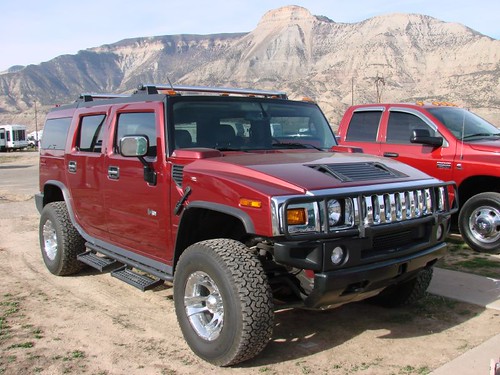
2. **Hummer H2**
Cast your mind back to the early 2000s, a time when everyone, it seemed, wanted to drive a vehicle that looked like it had just rolled off a military base. This was the era of the Hummer H2, a machine designed to make you appear tough, ready for anything, and absolutely primed for adventure. With gas prices being significantly lower back then, the concept of getting a mere eight miles per gallon didn’t seem to deter the eager consumers lining up for their slice of perceived ruggedness and power.
The H2’s massive, imposing size was a huge part of its appeal, giving owners that coveted high-riding, powerful feeling. Navigating crowded parking lots became a Herculean task, a nightmare for anyone brave enough to pilot this behemoth through urban jungles. Yet, these minor inconveniences were often overlooked for the sheer presence the vehicle commanded. It was about making a statement, and the H2 certainly made a loud one.
Fast forward to today, and the once-mighty Hummer H2 has undergone a significant transformation in public perception. No longer a symbol of aspirational toughness, it now screams wasteful and incredibly impractical. The shift in climate change awareness has cast these gas-guzzling monsters in a new, less favorable light, making them appear selfish and undeniably outdated. The sheer consumption feels out of step with modern values, transforming its image from cool to cringe.
Adding to its fall from grace is the uncomfortable truth that most H2 owners never actually took their massive trucks off-road. The whole tough-guy image, designed to evoke military prowess and rugged adventure, ended up seeming manufactured and try-hard. It was all show and very little go, particularly where its advertised capabilities were concerned. The H2’s journey from revered symbol to embarrassing relic perfectly encapsulates how quickly societal values can redefine what’s considered “cool” in the automotive world.
Car Model Information: 2003 Hummer H2 Base
Name: Hummer H2
Manufacturer: AM General
Production: 2002–2009
ModelYears: 2003–2009
Assembly: Mishawaka, Indiana,Kaliningrad,designer = Clay Dean (2000)
Class: Full-size SUV
BodyStyle: Sports utility vehicle,pickup truck
Platform: GMT800
Related: Chevrolet Silverado,Chevrolet Avalanche,Chevrolet Tahoe,Chevrolet Suburban,Cadillac Escalade
Layout: Front-engine, four-wheel-drive layout,four-wheel drive
Engine: General Motors LS-based small-block engine#LQ4
Transmission: 4L60E,4-speed 4L65E automatic (2005–2007),automatic transmission
Wheelbase: 122.8 in
Abbr: on – 6.2 L
Length: 203.5 in
Width: 81.3 in
Height: 2002–03: {{convert,77.8,in,mm,0,abbr=on
Weight: {{convert,6400,lb,kg,0,abbr=on
Categories: 2000s cars, AM General vehicles, All-wheel-drive vehicles, All articles needing additional references, Articles needing additional references from January 2024
Summary: The Hummer H2 is a full-size off-road sport utility vehicle (SUV) that was marketed by Hummer and built in the AM General facility under contract from General Motors from 2002 until 2009. It is based on a modified GMT820 GM three-quarter-ton pickup truck in the front and a half-ton 1500 frame in the rear. A four-door pickup truck version with a midgate that opens the vehicle’s interior to the external cargo bed was introduced for the 2005 model year as the H2 SUT (sport utility truck).
Get more information about: Hummer H2
Buying a high-performing used car >>>
Brand: Hummer Model: H2
Price: $13,980 Mileage: 152,679 mi.
Read more about: Seriously, What Were We Thinking? 15 Cars That Went From Peak Cool To Total Cringe

3. **Mitsubishi Eclipse (4th Generation)**
For many car enthusiasts, the original Mitsubishi Eclipse was a genuine icon, a legitimate sports car that could truly deliver on speed and style. Young people, in particular, were drawn to its sleek design and the exhilarating punch of its turbocharged engines, which made them feel like they were ready to conquer any street race. The early Eclipse models even earned their stripes in popular culture, notably in Fast and Furious movies, cementing their status as cool, desirable rides for a generation eager for accessible performance.
However, the story took a sharp turn when Mitsubishi decided to introduce the 4th Generation Eclipse. Instead of building on the legacy of its predecessors, the company transformed it into a heavy, slow convertible, seemingly aiming for a luxury cruiser vibe rather than the spirited sports car identity it once held. They kept the iconic Eclipse name, but, tragically, they threw away almost everything that had made the earlier versions special and beloved by its fanbase.
This dramatic shift left many scratching their heads. The fake sporty styling of the 4th Gen Eclipse fooled absolutely nobody who truly appreciated performance and authentic design. Its lackluster performance was a stark contrast to the turbocharged thrills of its ancestors, leaving a gaping void where excitement once resided. It simply couldn’t deliver on the promise its name once carried, becoming an object lesson in how not to evolve a beloved model.
Driving a 4th Generation Eclipse now, unfortunately, tends to make people think you don’t quite know anything about cars. It’s a sad end for a nameplate that once symbolized affordable speed and sharp design. The journey of the 4th Gen Eclipse from a once-cool lineage to an underwhelming, misunderstood iteration perfectly illustrates how losing touch with your roots can turn a celebrated car into an automotive embarrassment, transforming former admiration into a collective cringe.
Car Model Information: 2007 Mitsubishi Eclipse Spyder GS
Name: Mitsubishi Eclipse
Caption: Fourth-generation Mitsubishi Eclipse GS coupe
Manufacturer: Mitsubishi Motors
Production: 1989–August 2011 (906,876 units)
ModelYears: 1990–2012
Assembly: Normal, Illinois
Class: Sports car
BodyStyle: liftback,coupé
Layout: Front-engine, front-wheel-drive layout,Front-engine, four-wheel-drive layout
Predecessor: Mitsubishi Cordia,Mitsubishi Starion
Categories: 1990s cars, 2000s cars, 2010s cars, All-wheel-drive vehicles, All articles with unsourced statements
Summary: The Mitsubishi Eclipse was a sport compact car manufactured and marketed by Mitsubishi over four generations in the 1990–2012 model years. A convertible body style was added during the 1996 model year.
The first two generations were marketed simultaneously as rebadged variants, including the Eagle Talon and Plymouth Laser — and were a byproduct of Mitsubishi Motors and Chrysler Corporation’s close alliance. Their partnership in turn gave rise to Diamond-Star Motors (DSM). In Japan, the first two generations were sold at a specific Japanese retail chain called Mitsubishi Car Plaza. The third, 2000–2005 generation shared an extended wheelbase variant of their platform with the Chrysler Sebring and Dodge Stratus. In May 2005, the fourth, and final generation Eclipse was introduced, replacing the Chrysler platform used for the third generation with the PS platform.
According to Mitsubishi, the Eclipse was named after an unbeaten 18th-century English racehorse that won 18 races in a row and then retired.
At the end of August 2011, the final Eclipse was manufactured and auctioned for charity.
In 2017, Mitsubishi resurrected the Eclipse name on a compact crossover vehicle, called the Eclipse Cross.
Get more information about: Mitsubishi Eclipse
Buying a high-performing used car >>>
Brand: Mitsubishi Model: Eclipse
Price: $5,500 Mileage: 115,000 mi.
Read more about: Seriously, What Were We Thinking? 15 Cars That Went From Peak Cool To Total Cringe
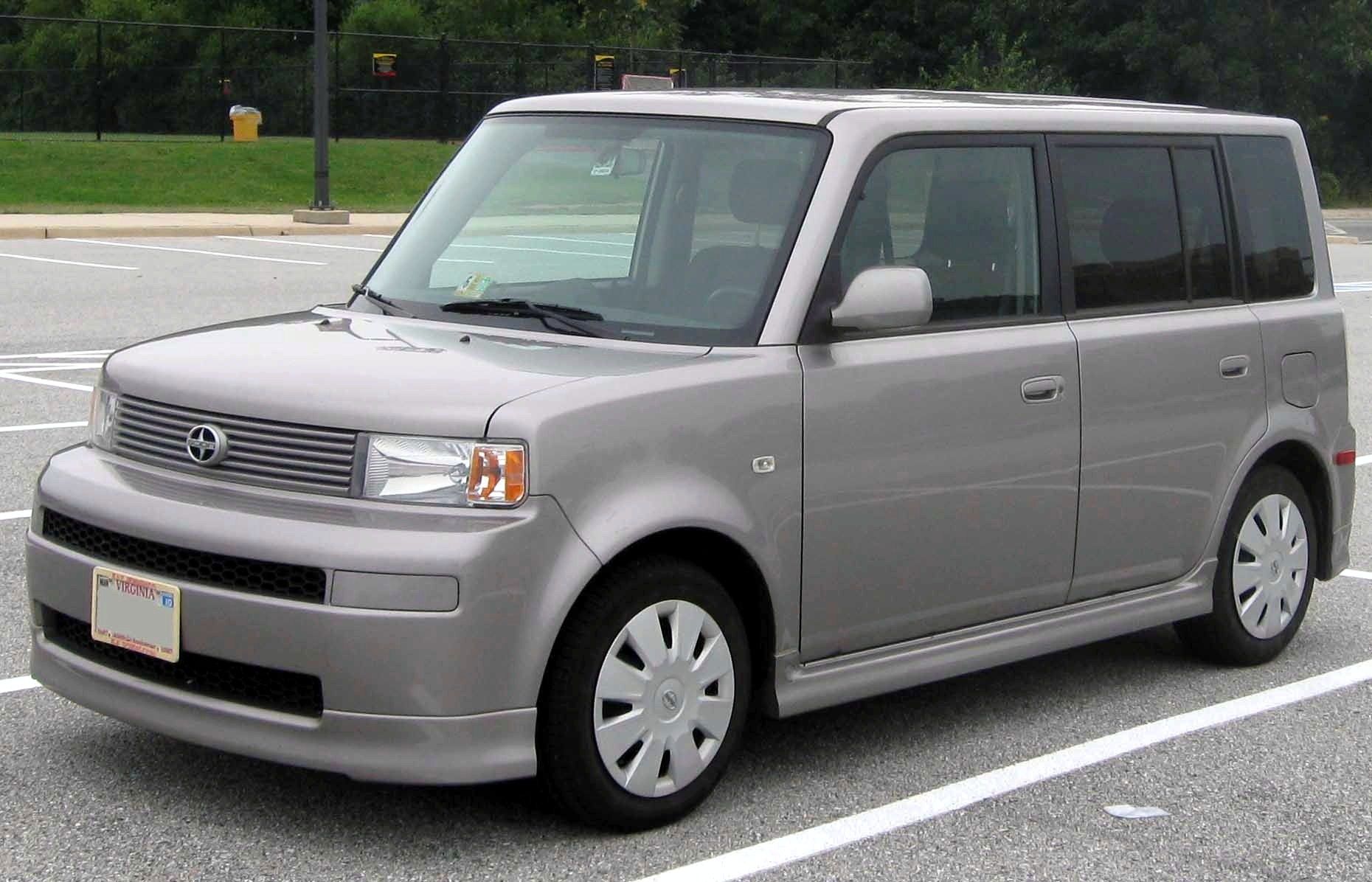
4. **Scion xB**
When Toyota launched the Scion brand, their mission was clear: attract young buyers with designs that were deliberately different, even a little weird, and unapologetically boxy. The Scion xB was the flag-bearer for this movement, marketed as the ultimate expression of individuality for those who didn’t care for traditional car beauty. Its unconventional, almost refrigerator-on-wheels aesthetic found an unexpected embrace among hip-hop artists and various creative types who appreciated its distinctive shape.
Beyond its unique styling, the xB offered some undeniable practical advantages. Its spacious interior was a major draw, providing ample room in a compact footprint. Coupled with a cheap price point, it quickly gained popularity, especially with college students and urban dwellers who prioritized affordability and versatility. It was a vehicle that screamed, “I’m different, and I own it!” which resonated deeply with a niche, but enthusiastic, audience.
However, the novelty of being intentionally ugly, or at least unconventionally styled, has a surprisingly short shelf life. What started as a quirky, endearing trait eventually started to wear thin. Once the initial buzz faded, the stark reality set in for many owners: they were driving something that genuinely looked like a refrigerator on wheels. The initial charm quickly gave way to a dawning realization that perhaps standing out wasn’t always synonymous with looking good.
The ultimate fate of the Scion xB, and indeed the entire Scion brand, serves as a poignant reminder that while difference can attract attention, sustained success often requires a broader appeal. The brand eventually died because, as it turned out, normal people generally want cars that look good, not just vehicles that are different and constantly seeking attention. The xB’s journey from quirky trendsetter to dated oddity perfectly illustrates the fine line between innovative design and a temporary gimmick.
Car Model Information: 2012 Scion xB
Name: Scion xB
Manufacturer: Toyota
Production: June 2003 – December 2015
ModelYears: 2004–2015
Class: unbulleted list
BodyStyle: hatchback
Aka: unbulleted list
Layout: FF layout
Successor: Scion iM
Categories: 2010s cars, All articles with unsourced statements, Articles with short description, Articles with unsourced statements from April 2024, Articles with unsourced statements from December 2016
Summary: The Scion xB is a five-door compact hatchback that was produced by Scion, a former marque of Toyota. Produced from the 2004 to 2015 model years, it was one of the two launch models of the Scion marque, alongside the Scion xA.
The first-generation xB was a rebadged version of the subcompact Toyota bB designed for the American market, with marketing and options appealing to a young adult demographic as part of Scion’s overall positioning. In 2007, Scion launched a second-generation xB, which was retooled as a compact car based on the E150 series Corolla; this model would also be sold internationally as the Toyota Corolla Rumion in Japan and the Toyota Rukus in Australia.
Get more information about: Scion xB
Buying a high-performing used car >>>
Brand: Scion Model: xB
Price: $9,950 Mileage: 100,741 mi.
Read more about: Seriously, What Were We Thinking? 15 Cars That Went From Peak Cool To Total Cringe
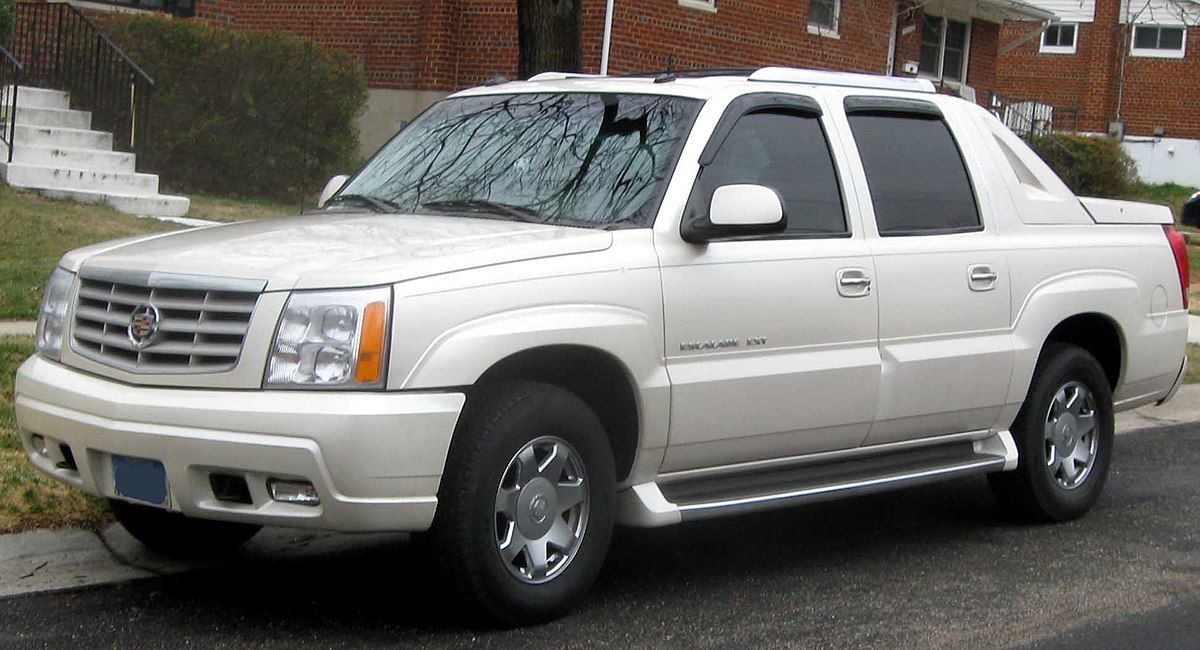
5. **Cadillac Escalade EXT**
Back in the early 2000s, Cadillac had a grand vision: they believed that luxury truck buyers deserved something far more opulent and flashy than a standard pickup. Their answer was the Escalade EXT, a daring fusion that combined the opulent Escalade SUV with a truck bed. This wasn’t just a vehicle; it was conceived as the ultimate status symbol, a rolling declaration of wealth and extravagance that perfectly captured the spirit of the era.
Wealthy individuals absolutely adored the concept of owning a truck that could rival the expense and flashiness of their SUVs. The Escalade EXT was a chrome-laden dream, boasting a “bling factor” that was, quite literally, off the charts. Every angle, every detail, was designed to scream luxury and exclusivity, appealing directly to a demographic eager to showcase their financial success in the most ostentatious way possible. It was about making an undeniable statement on the road.
Looking back, however, the Escalade EXT stands as a glaring monument to wasteful excess. Its design was inherently flawed, attempting to marry two disparate concepts without true success. The truck bed, intended for utility, was almost laughably useless for any real hauling tasks, and the vehicle’s fuel economy was nothing short of horrible. It was a vehicle that unapologetically screamed “nouveau riche,” prioritizing flash over genuine function or efficiency.
Today, the Cadillac Escalade EXT represents everything that was arguably wrong with early 2000s car culture. Its over-the-top luxury, which once projected an image of power and success, now comes across as tacky and desperate, rather than genuinely impressive. It serves as a stark reminder of a period where bigger and shinier often overshadowed sensible design and practical considerations, making its journey from aspirational to cringe-worthy complete.
Car Model Information: 2018 Honda Civic EX
Name: Cadillac Escalade
Caption: Fifth generation Cadillac Escalade
Manufacturer: Cadillac
Production: 1998–present,2002–present (ESV),2001–2013 (EXT),2008–2013 (Hybrid)
ModelYears: 1999–2000,2002–present
Class: Full-size,luxury car,sport utility vehicle
Related: ubl
Layout: Front-engine, rear-wheel drive layout,Front-engine, four-wheel drive layout
Categories: 2000s cars, 2010s cars, 2020s cars, All-wheel-drive vehicles, All Wikipedia articles in need of updating
Summary: The Cadillac Escalade is a full-size luxury SUV manufactured by General Motors and marketed by Cadillac as its first major entry into the SUV market. The Escalade was introduced for the 1999 model year in response to an influx of new luxury SUVs in the late 1990s including the Mercedes-Benz M-Class, Range Rover, Lexus LX, and Ford’s 1998 debut of the Lincoln Navigator. The Escalade project went into production only ten months after it was approved. The Escalade is built in Arlington, Texas.
The term “escalade” refers to a siege warfare tactic of scaling defensive walls or ramparts with the aid of ladders or siege towers. More generally, it is a French word which is the noun-equivalent form of the French verb escalader, which means “to climb or scale”.
The Escalade is currently sold in North America and select international markets (Europe and Asia) where Cadillac has official sales channels. The Escalade ESV (Escalade Stretch Vehicle) is sold in North America, Russia, and the Middle East, but is only available by special order in some international markets. The right-hand-drive Escalade and Escalade ESV are available through third-party conversion specialists without official agreement with Cadillac in Australian, Oceanic, and Japanese markets.
On August 8, 2023, GM presented the Escalade IQ, an all-electric version of the Escalade, and the third model in Cadillac’s EV line, after the Celestiq, and Lyriq. It is expected to go on sale in late 2024 for the 2025 model year, with a starting price of $130,000.
The Escalade has gone through five generations, the most recent (the fifth) prsented in 2021, noted for its technology and self-driving capability. The fifth generation Escalade is nearly two metres high, and was criticized by The Verge for its excessive size and hazard to pedestrians.
Get more information about: Cadillac Escalade
Buying a high-performing used car >>>
Brand: Cadillac Model: Escalade EXT
Price: $19,974 Mileage: 64,299 mi.
Read more about: Seriously, What Were We Thinking? 15 Cars That Went From Peak Cool To Total Cringe
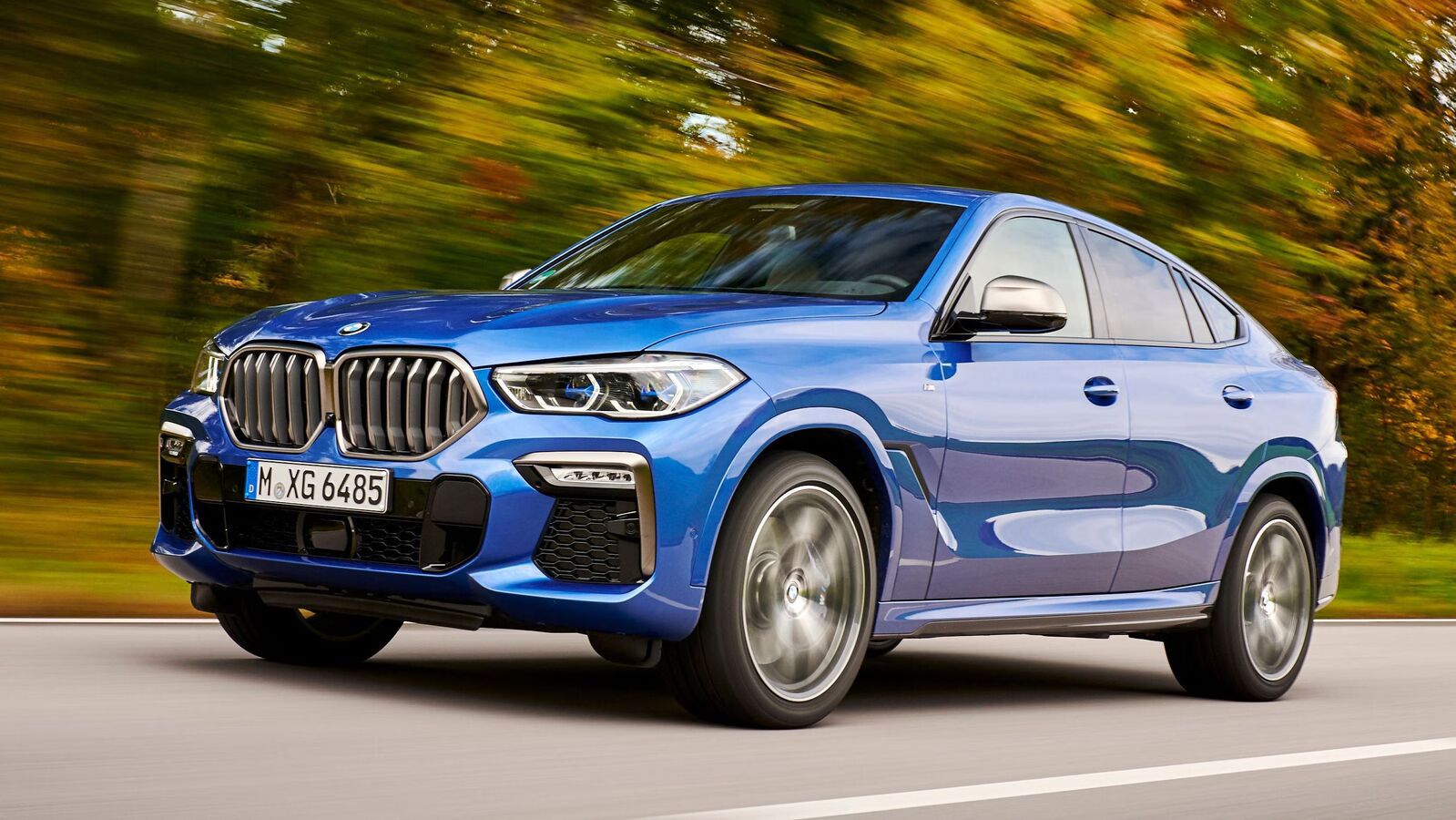
6. **BMW X6**
BMW, ever the innovator, decided to take a bold leap and invent an entirely new category: the coupe SUV, giving birth to the distinctive BMW X6. Their audacious vision involved taking the robust base of a regular X5 SUV and grafting onto it a dramatically sloping roofline, a design choice intended to convey an air of sportiness and elegance. The marketing machinery went into overdrive, promoting the X6 as the ultimate “best of both worlds” vehicle, promising SUV capability fused with undeniable sports car style.
This unique proposition certainly found its audience, particularly among wealthy buyers who were captivated by the exclusive, expensive image it projected. Owning an X6 wasn’t just about driving; it was about making a statement, showcasing a willingness to embrace new automotive concepts and a taste for the unconventional. It was an immediate status symbol for those looking for something that blended luxury with a perceived athletic edge, setting them apart from the traditional SUV crowd.
The reality of the BMW X6, however, turned out to be much less impressive than its aspirational marketing. That striking, sloped roofline, while visually distinct, came at a significant practical cost. It rendered the back seat almost unusable for taller passengers and dramatically reduced cargo space, undercutting the very utility expected from an SUV. Furthermore, despite its sporty pretensions, the X6 predominantly drove like a heavy SUV, not the agile sports car its design suggested.
Today, the X6 often looks like BMW was simply trying to create an expensive solution to problems that didn’t actually exist. The entire concept now strikes many as pointless and, frankly, a bit pretentious. It’s a testament to how even luxury brands can stumble when attempting to redefine categories, leaving a legacy of a vehicle that went from a head-turning novelty to a head-scratching example of design over substance, solidifying its place on our ‘wow to yikes’ list.
Car Model Information: 2016 BMW X6 xDrive35i
Name: BMW X6
Caption: BMW X6 (F16)
Manufacturer: BMW
Production: December 2007 – present
ModelYears: 2008–present
Class: Executive car,crossover SUV
BodyStyle: coupé SUV
Layout: Front-engine, four-wheel-drive
Related: BMW X5
Categories: 2000s cars, 2010s cars, 2020s cars, All-wheel-drive vehicles, All articles with dead external links
Summary: The BMW X6 is a mid-size luxury crossover SUV by German automaker BMW. The BMW X6 is the originator of the sports activity coupé (SAC), referencing its sloping rear roof design. It combines the attributes of an SUV (high ground clearance, all-wheel drive and all-weather ability, large wheels and tires) with the stance of a coupé (styling featuring a sloping roof). It is built in BMW’s North American plant in Greer, South Carolina alongside the BMW X5, whose platform it shares. Prior to the release of the X7, the X6 was considered a flagship SUV for BMW.
The first generation (E71) was released for sale in April 2008 for the 2008 model year, while the second-generation X6 (F16) was launched at the Paris Motor Show in 2014. The third-generation X6 was revealed in July 2019.
Get more information about: BMW X6
Buying a high-performing used car >>>
Brand: BMW Model: X6
Price: $20,500 Mileage: 78,740 mi.
Read more about: Seriously, What Were We Thinking? 15 Cars That Went From Peak Cool To Total Cringe
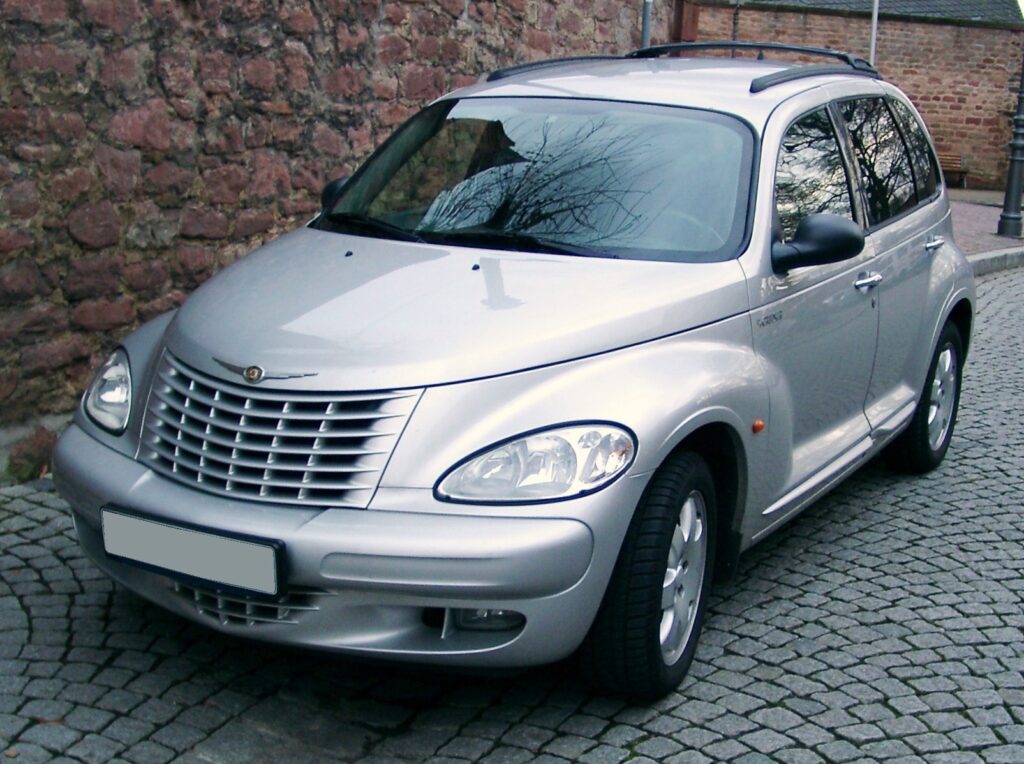
7. **Chrysler PT Cruiser**
When the Chrysler PT Cruiser rolled onto the scene, it was like a blast from the past, trying to bring back the cool, gangster-era vibes of the 1930s. People actually thought it was super cute and a refreshing change from all the bland, boring cars cluttering the roads. It really stood out, promising a unique blend of retro charm with a dash of modern quirk.
Beyond its distinctive looks, the PT Cruiser also offered some genuinely practical features that made it appealing. We’re talking about lots of cargo space, which is always a win, and even removable seats, making it quite versatile for its size. Marketing efforts painted it as the perfect ride for creative, fun-loving individuals who weren’t afraid to show off a little personality.
But, as with many fleeting trends, the novelty of its retro costume started to wear thin, and it did so pretty quickly. What began as an endearing quirk soon turned into a glaring issue when folks realized they were essentially driving a regular economy car that was just dressed up in a peculiar outfit. The initial charm quickly faded, making way for the uncomfortable truth that its build quality was, well, poor, and that unique styling? It just became annoying to a lot of people.
Today, seeing a PT Cruiser often feels like looking at a failed costume party attempt from the automotive world. It’s a stark reminder of how a car can try so hard to be different and charming, only to end up looking like a quirky experiment that didn’t quite land. It’s a classic example of a “wow” moment that quickly devolved into a collective “yikes.”
Car Model Information: 2018 Honda Civic EX
Name: Chrysler PT Cruiser
Manufacturer: Chrysler
ModelCode: PT,PG
Production: 2000–2010
ModelYears: 2001–2010
Assembly: Toluca
Designer: Bryan Nesbitt
Class: Compact car
BodyStyle: convertible
Platform: Chrysler PT platform
Related: Dodge Neon
Predecessor: Dodge Neon
Successor: Lancia Delta#Third generation
Layout: Front-engine, front-wheel-drive layout
Engine: ubl
Transmission: Ultradrive#40TE
Wheelbase: 103 in
Abbr: on
Length: 168.8 in
Width: 67.1 in
Height: 63 in
Weight: 3123 lb
Categories: 2010s cars, All articles with unsourced statements, Articles with short description, Articles with unsourced statements from March 2018, Cars discontinued in 2010
Summary: The Chrysler PT Cruiser is a compact car that was built by the American company Chrysler from 2001 until 2010. Introduced as a five-door hatchback wagon, a two-door convertible variant was also made from 2005 until 2008.
Originally planned as a Plymouth model, the PT Cruiser was ultimately marketed as a Chrysler when Plymouth was discontinued. Intended to invoke 1930s aesthetics, the exterior of the PT Cruiser was designed by Bryan Nesbitt. The model received an intermediate facelift for the 2006 model year. Interior packaging was noted for its high roof, high h-point seating, and flexible cargo and passenger configurations enabled by a multi-level rear cargo shelf and rear seats a user could fold, tumble, or remove.
The PT Cruiser was produced in Mexico and Austria at the Toluca Car Assembly and Eurostar Automobilwerk factories respectively. By the end of production in July 2010, worldwide production had reached 1.35 million.
In its nameplate, PT stands for “Personal Transport” or “Personal Transportation”. PT was the PT Cruiser’s product code for the Mexican-made units.
Get more information about: Chrysler PT Cruiser
Buying a high-performing used car >>>
Brand: Chrysler Model: PT Cruiser
Price: $19,974 Mileage: 64,299 mi.
Read more about: Seriously, What Were We Thinking? 15 Cars That Went From Peak Cool To Total Cringe

8. **Chevrolet SSR**
Imagine a pickup truck that could transform into a convertible – sounds wild, right? That was the ambitious dream behind the Chevrolet SSR, a vehicle designed to combine the exhilarating fun of a sports car with the rugged utility of a truck. Its retro styling was a clear nod to the classic hot rods of the 1950s, promising a nostalgic yet futuristic ride.
General Motors really marketed the SSR as the ultimate companion for weekend adventures and a surefire way to turn heads at any car show. It was supposed to be the best of both worlds, offering an open-air driving experience alongside the practical benefits of a truck bed. The idea was undeniably cool, sparking excitement among those who loved unique automotive concepts.
However, the harsh reality quickly set in: the SSR turned out to be terrible at being both a truck *and* a sports car. Its truck bed was surprisingly tiny, almost comically useless for any real hauling tasks, completely undermining its advertised utility. Performance was a letdown, and its cartoonish styling, which aimed for retro cool, instead often came across as just plain odd.
In hindsight, the Chevrolet SSR feels like an expensive toy that nobody actually needed or truly wanted. It exemplifies a vehicle that tried to do too much and, in doing so, failed to excel at anything, plummeting from an intriguing concept to an automotive head-scratcher. It’s a perfect illustration of a “wow” idea that turned into an undeniable “yikes.”
Car Model Information: 2005 Chevrolet SSR Base
Name: Chevrolet SSR
Manufacturer: Chevrolet
Production: 2003–2006
ModelYears: 2003–2006
Assembly: Lansing, Michigan
Class: Pickup truck
BodyStyle: ubl
Platform: GMT360
Related: ubl
Layout: Front-engine, rear-wheel drive layout
Engine: ubl
Transmission: ubl
Wheelbase: 116.0 in
Abbr: on
Length: ubl
Width: 78.6 in
Height: ubl
Designer: ubl
Categories: All articles needing additional references, All articles with unsourced statements, Articles needing additional references from July 2008, Articles with short description, Articles with unsourced statements from August 2023
Summary: The Chevrolet SSR (Super Sport Roadster) is a retro-styled and retractable hardtop convertible pickup truck manufactured by Chevrolet between 2003 and 2006.
During the 2003 and 2004 model years, the SSR used General Motors’ 5.3 L 300 hp (224 kW; 304 PS) Vortec 5300 V8. Performance was 7.7 seconds for 0–60 mph (0–97 km/h) with a 15.9 second 1⁄4 mile (402.3 m) time at 86.4 mph (139.0 km/h).
For the 2005 model year, the SSR used the 390 hp (291 kW; 395 PS) LS2 V8 engine also used in the C6 Corvette, Trailblazer SS, and Pontiac GTO, now offering a manual transmission option, the six-speed Tremec, for the first time. Performance improved dramatically with the LS2; the 6-speed manual version had an advertised 0–60 mph (97 km/h) acceleration time of 5.29 seconds. In addition, GM badges were added to the vehicle.
For 2006, output of the LS2 increased to 395 hp (295 kW; 400 PS).
Get more information about: Chevrolet SSR
Buying a high-performing used car >>>
Brand: Chevrolet Model: SSR
Price: $44,895 Mileage: 22,005 mi.
Read more about: Seriously, What Were We Thinking? 15 Cars That Went From Peak Cool To Total Cringe
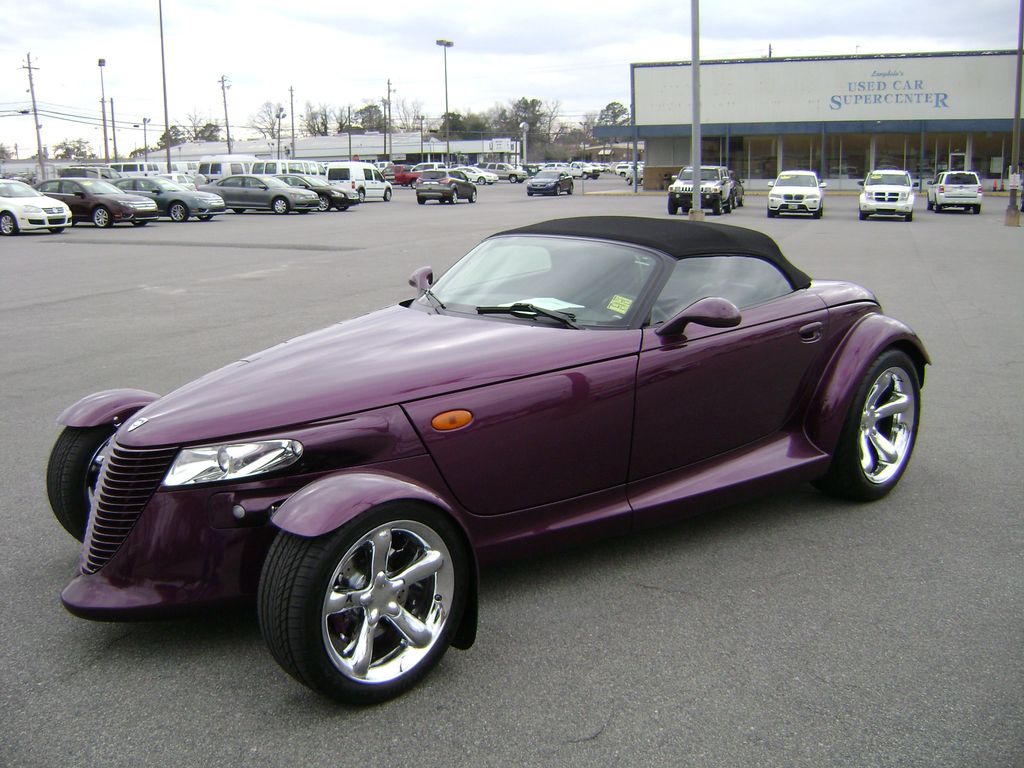
9. **Plymouth Prowler**
When the Plymouth Prowler burst onto the scene, it was nothing short of a spectacle. It looked like a concept car that had somehow escaped the drawing board and made its way straight to the dealership. With its audacious open wheels and radical hot rod styling, it felt like a futuristic American take on a classic. Car enthusiasts were genuinely excited to see an American company taking such bold risks with design.
The Prowler’s unique appearance, coupled with its aluminum construction, gave it the aura of a high-end custom build you could actually buy. It promised an experience unlike anything else on the road, a real head-turner that signaled a new era of daring automotive design. It was all about making an unforgettable visual statement.
But, as soon as people got behind the wheel, the excitement quickly gave way to a sobering reality: the Prowler was, unfortunately, all show and very little go. Its V6 engine was disappointingly weak, especially for a car that looked so aggressive, and the mandatory automatic transmission felt incredibly boring, lacking the engaging feel enthusiasts craved. Add to that a terrible ride quality, and the dream began to unravel.
Ultimately, the Plymouth Prowler cemented its legacy as an expensive toy that prioritized weird looks over genuine driving satisfaction. Its radical styling, which was once its biggest asset, unfortunately aged poorly, now often coming across as “try-hard” rather than authentically cool. It’s a prime example of a car that promised a “wow” factor but delivered a definitive “yikes” once you experienced it.
Car Model Information: 1997 Plymouth Prowler
Name: Plymouth Prowler
Manufacturer: Chrysler Corporation
Production: 1997–2002,11,702 produced
Assembly: Detroit, Michigan
Class: Sports car
Layout: Front-engine, rear-wheel-drive layout#Front mid-engine, rear-wheel-drive layout
Platform: Chrysler PR platform
BodyStyle: Roadster (automobile)
Engine: Chrysler SOHC V6 engine#3.5,V6 engine
Transmission: Ultradrive#A606/42LE,automatic transmission
Aka: Chrysler Prowler (2000–2002)
Wheelbase: 113.3 in
Abbr: on
Length: 165.3 in
Width: 76.5 in
Height: 50.9 in
Weight: 2800 lb
Successor: Chrysler Crossfire
Designer: Tom Gale (designer)
Caption: 2000 Plymouth Prowler
Categories: 2000s cars, All articles needing additional references, Articles needing additional references from November 2015, Articles with short description, Cars introduced in 1997
Summary: The Plymouth Prowler, later the Chrysler Prowler, is a two-door, two passenger sports car, manufactured and marketed by DaimlerChrysler for model years 1997-2002 — widely known for its hand-crafted aluminum bodywork and its retro-hot rod styling with open, Indy racer-style front wheels.
Based on the 1993 concept car of the same name, Chrysler offered the Prowler over a single generation, with a V6 front-engine, and a rear-transaxle, rear-drive configuration — reaching a total production of 11,702 units.
Get more information about: Plymouth Prowler
Buying a high-performing used car >>>
Brand: Plymouth Model: Prowler
Price: $34,993 Mileage: 9,424 mi.
Read more about: Seriously, What Were We Thinking? 15 Cars That Went From Peak Cool To Total Cringe
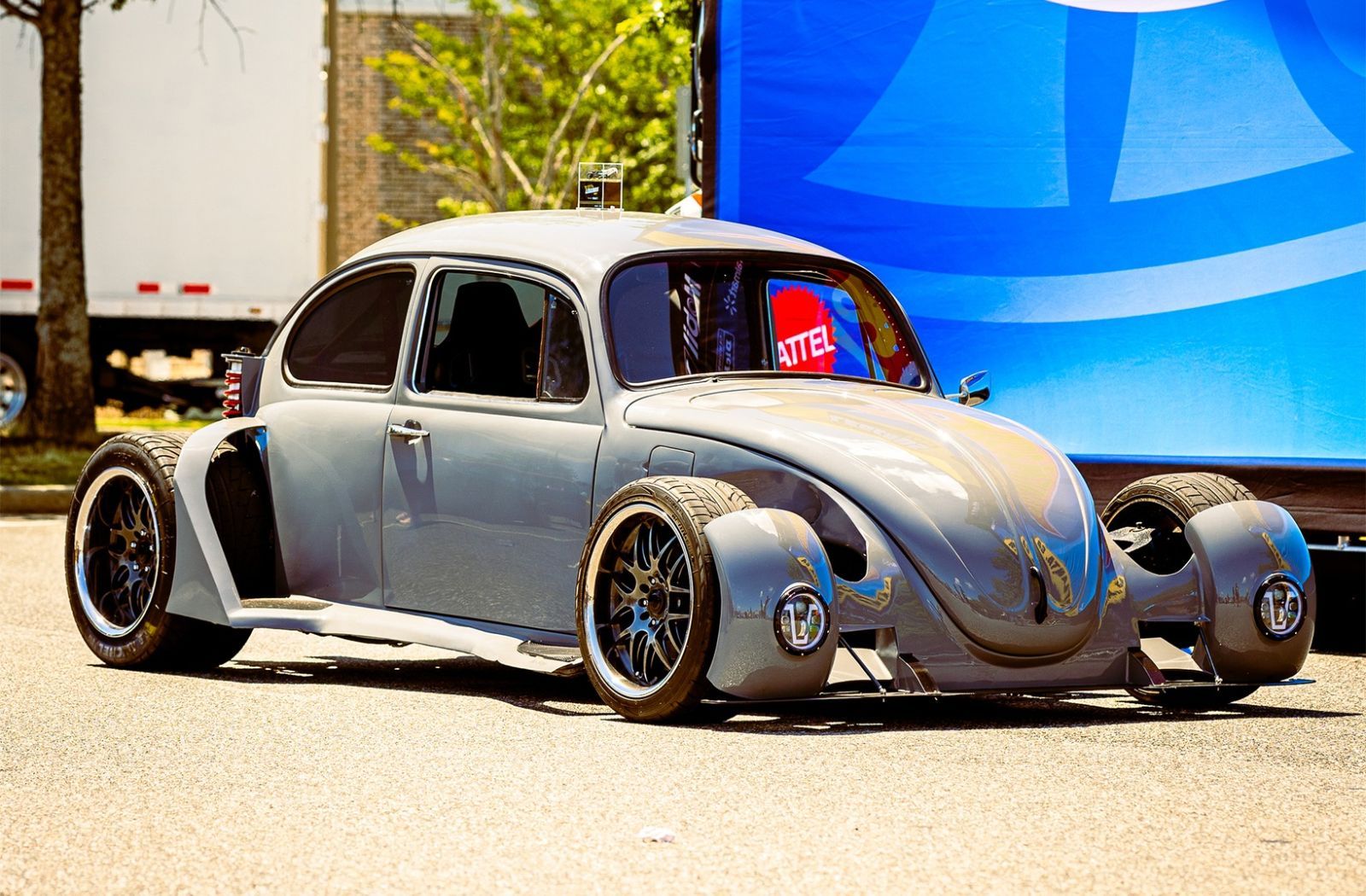
10. **Volkswagen New Beetle**
Volkswagen had a brilliant idea: bring back their most famous car, the iconic Beetle, but with a modern twist of safety and reliability. The New Beetle was designed to recapture that fun, carefree, “hippie mobile” spirit of the original, offering a nostalgic ride for a new generation. Young women, in particular, were drawn to its cute, friendly design, complete with an available flower vase for that extra touch of charm.
It seemed like the perfect car for anyone who wanted to stand out from the sea of boring sedans and SUVs, offering a bubbly, approachable aesthetic that made people smile. The marketing pushed the idea of a car that was not just transportation, but an extension of one’s cheerful, individualistic personality. It was all about embracing a sweet, retro vibe.
However, the charm of the retro trend proved to be surprisingly short-lived, and the New Beetle quickly started looking dated and, for some, overly girly. Men largely avoided it, and even many women eventually moved on to other, more contemporary cars as the initial novelty wore off. The forced nostalgia began to feel more like a gimmick, especially since underneath all that cute styling, it was essentially just a regular Golf.
Today, the Volkswagen New Beetle often feels like an automotive relic of a trend that died out too soon, a car that tried a little too hard to be cute and quirky instead of genuinely great. It’s a bittersweet reminder of how a vehicle can launch with a “wow” of nostalgia, only to descend into a “yikes” of being stuck in a bygone era.
Car Model Information: 2018 Honda Civic EX
Name: Volkswagen New Beetle
Caption: 1998–2005 New Beetle (pre-facelift)
Manufacturer: Volkswagen
Aka: Volkswagen Beetle (Mexico),Volkswagen Bjalla (Iceland)
Production: October 1997 – July 2011
ModelYears: 1998–2010
Assembly: Wolfsburg,Puebla, Puebla,Hai Phong
Designer: J Mays
Class: Compact car
BodyStyle: hatchback
Platform: Volkswagen Group A platform#A4 (PQ34)
Related: Volkswagen Golf Mk4,Volkswagen CityJetta
Layout: Front-engine, front-wheel-drive layout,front-wheel drive,4motion,all-wheel drive
Engine: Straight-4,Multi-valve
Transmission: automatic transmission
Wheelbase: 2515 mm
Abbr: on
Length: 4129 mm
Width: 1721 mm
Height: 59.5 in
Order: flip (convertible)
Predecessor: Volkswagen Beetle
Successor: Volkswagen Beetle (A5)
Categories: 1990s cars, 2000s cars, 2010s cars, All articles with unsourced statements, Articles with short description
Summary: The Volkswagen New Beetle is a compact car introduced by Volkswagen in 1997, drawing heavy inspiration from the exterior design of the original Beetle. Unlike the original Beetle, the New Beetle has its engine in the front, driving the front wheels, with luggage storage in the rear. It received a facelift in 2005 and was in production until 2011, nearly fourteen years since its introduction.
In the 2012 model year, a new Beetle model, the Beetle (A5), replaced the New Beetle. Various versions of this model continued to be produced in Puebla, Mexico, until the final car left the assembly line on 10 July 2019.
Get more information about: Volkswagen New Beetle
Buying a high-performing used car >>>
Brand: Volkswagen Model: New Beetle
Price: $19,974 Mileage: 64,299 mi.
Read more about: Seriously, What Were We Thinking? 15 Cars That Went From Peak Cool To Total Cringe
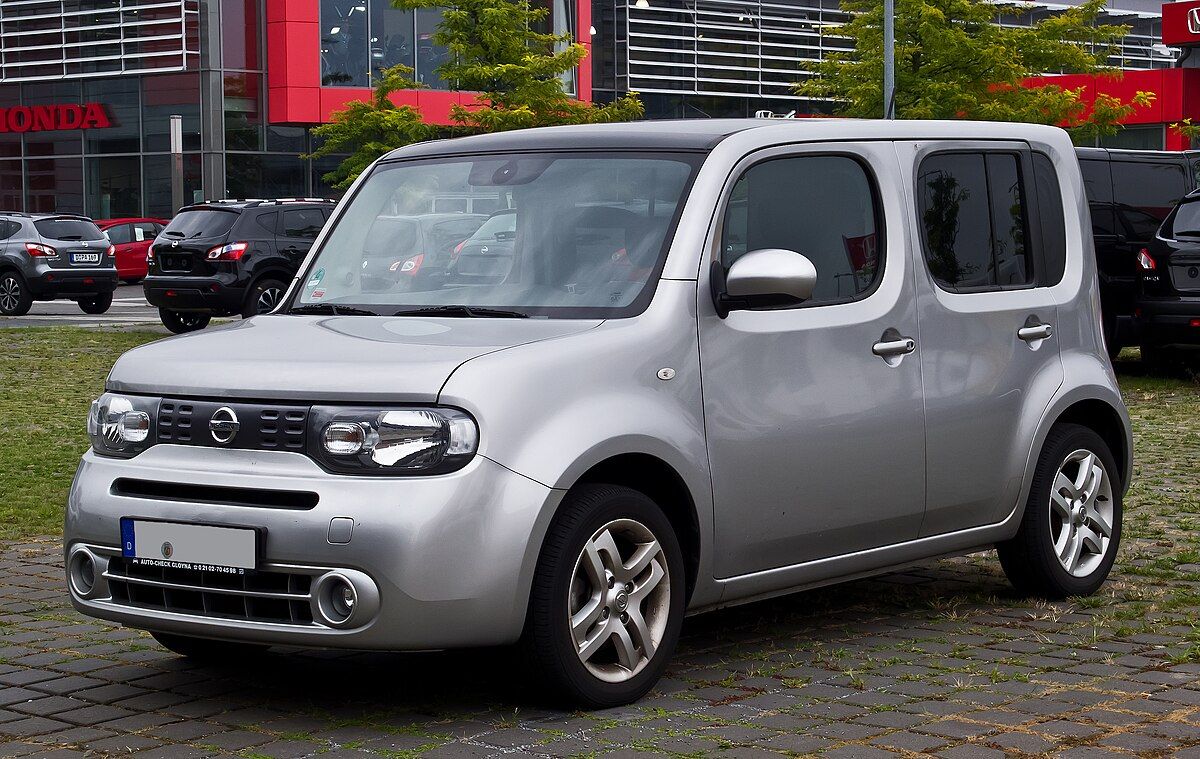
11. **Nissan Cube**
Nissan took a rather bold gamble by importing the Cube, a Japanese market oddball, to America. Their hope was that American buyers, known for their love of individuality, would embrace its utterly weird and unconventional design. The Cube was specifically pitched to creative, individualistic buyers who craved something completely different, a car that literally encouraged you to “think outside the box” with its distinctive boxy shape and asymmetrical rear window.
Its intentionally strange aesthetics were meant to be a statement, a testament to anti-conformity in a world of increasingly aerodynamic and uniform car designs. The spacious interior, another benefit of its boxy nature, was a definite plus for urban dwellers needing practical room in a compact footprint. It was a fascinating experiment in automotive rebellion.
Unfortunately, American buyers mostly just… rejected the bizarre styling. The quirky looks, which were supposed to be its biggest selling point, often came across as just plain ugly. Beyond the polarizing exterior, the interior often felt cramped despite its boxiness, and many found the car to be cheap and underpowered when compared to more traditional alternatives available on the market.
Ultimately, the Nissan Cube stands as a clear example of a failed experiment in making cars as weird as possible. Its intentionally ugly design, once a badge of honor for individuality, now simply appears desperate for attention rather than genuinely innovative or useful. It’s a journey from a head-turning “wow” to an utterly perplexing “yikes” that left many scratching their heads.
Car Model Information: 2012 Nissan Cube 1.8 SL
Name: Nissan Cube
Manufacturer: Nissan
Production: 1998–2019
Assembly: Yokosuka, Kanagawa
Class: Mini MPV
BodyStyle: hatchback
Layout: Front-engine, front-wheel-drive,Front-engine, four-wheel-drive
Platform: Nissan B platform
Successor: Nissan Note#E12,Nissan Lafesta,Nissan Juke
ModelYears: 2009–2014 (North America)
Categories: 2000s cars, 2010s cars, All-wheel-drive vehicles, All Wikipedia articles needing clarification, All articles with specifically marked weasel-worded phrases
Summary: The Nissan Cube is a mini MPV produced by carmaker Nissan between 1998 and 2019. Initially sold only in Japan, the Cube was sold in North American markets from 2009 to 2014, and in European markets from 2009 to 2011. In Japan, it was exclusive to Nissan Red Stage dealerships. It is a slightly larger load-carrying alternative to the Nissan Micra hatchback. While production for the North American market ended in 2014, the Japanese-market Cube lasted until December 2019.
Get more information about: Nissan Cube
Buying a high-performing used car >>>
Brand: Nissan Model: Cube
Price: $4,495 Mileage: 119,476 mi.
Read more about: Seriously, What Were We Thinking? 15 Cars That Went From Peak Cool To Total Cringe

12. **Lincoln Blackwood**
Lincoln had a grand, albeit ultimately flawed, vision: to create the ultimate luxury pickup truck. The Blackwood was their answer for wealthy buyers who theoretically needed to haul stuff but absolutely refused to give up their opulence. It was a bizarre mashup that combined the elegance of a Town Car with the rugged utility of an F-150. This vehicle even boasted a carpeted truck bed and a tonneau cover, all designed to protect expensive cargo in style.
The marketing targeted successful business owners, picturing them needing truck capability without having to compromise on luxury. It was an intriguing concept, a rolling testament to the idea that you could truly have it all – high-end comfort and practical hauling power, all wrapped up in a shiny, exclusive package.
However, the whole concept was flawed from its very inception. Real truck buyers, the ones who actually used their vehicles for work, wanted durability and ruggedness, not delicate carpeting in the bed. Conversely, luxury buyers, the supposed target audience, often didn’t need trucks at all, making the Blackwood an unnecessary extravagance for them. It ended up satisfying nobody, looking utterly ridiculous in its attempt to be both fancy and practical.
Today, the Lincoln Blackwood serves as a stark reminder of Lincoln’s desperate, and ultimately misguided, attempt to stay relevant by creating a product that made absolutely no sense. Its journey from a seemingly luxurious “wow” to a perplexing “yikes” perfectly encapsulates how trying to force two disparate concepts together can result in an automotive blunder that’s remembered more for its absurdity than its innovation.
Car Model Information: 2002 Lincoln Blackwood Base 4dr Crew Cab SB 2WD
Name: Lincoln Blackwood
Manufacturer: Lincoln Motor Company
Production: September 25th 2000 – August 8th, 2002
ModelYears: 2002 (United States),2002–2003 (Mexico)
Assembly: Claycomo, Missouri
Successor: Lincoln Mark LT
Class: luxury car,pickup truck
BodyStyle: pickup truck
Layout: Front-engine, rear-wheel drive layout
Related: Ford F-Series (tenth generation),Lincoln Navigator
Engine: Ford Modular engine#5.4 L
Transmission: Automatic transmission
Wheelbase: 138.5 in
Abbr: on
Length: 220.2 in
Width: 78.0 in
Height: 73.6 in
Designer: Patrick Schiavone
Caption: 2002 Lincoln Blackwood
Categories: All articles with unsourced statements, Articles with short description, Articles with unsourced statements from November 2024, Cars discontinued in 2002, Cars introduced in 2001
Summary: The Lincoln Blackwood is a luxury pickup truck that was marketed by the Lincoln division of Ford Motor Company for the 2002 model year. The first pickup truck marketed by Lincoln, the Blackwood was derived from the Ford F-150 SuperCrew and the Lincoln Navigator. Drawing its name from its simulated black woodgrain cargo box, the Blackwood was offered solely with a black-painted exterior.
Although the concept vehicle had a positive public reception, the production Blackwood fell far under sales projections in the United States and Mexico. After the 2002 model year, the Blackwood was discontinued in the United States, with a short run of 2003 models produced for Mexico. In total, only 3,383 units (NOT the commonly quoted 3,356 number) were produced, making it both the rarest and shortest-produced Lincoln model line.
For 2006, Lincoln entered the pickup truck segment for a second time with the Lincoln Mark LT — again based on the Ford F-150 —which, even though it also sold poorly, was more popular than the Blackwood.
The first Lincoln vehicle manufactured exclusively outside of the state of Michigan since 1958, the Blackwood was assembled by Ford at its Kansas City Assembly facility in Claycomo, Missouri, alongside the F-150 from September 2000 to August 2002.
Get more information about: Lincoln Blackwood
Buying a high-performing used car >>>
Brand: Lincoln Model: Blackwood
Price: $11,900 Mileage: 115,113 mi.
Read more about: Seriously, What Were We Thinking? 15 Cars That Went From Peak Cool To Total Cringe
And there you have it, a wild ride through the automotive graveyard of good intentions and bad executions. These 12 cars, each bursting onto the scene with a promise of coolness or innovation, ultimately stumbled, transforming from “wow” to “yikes” in the public eye. It’s a fascinating reminder that in the fast-paced world of cars, what’s hot today can quickly become a head-scratcher tomorrow. So, the next time a new model catches your eye, pause for a moment and consider: is it truly a timeless classic in the making, or are we just witnessing another vehicle destined for the “what were they thinking?” archives? Only time will tell, and oh, what stories those archives will hold!



